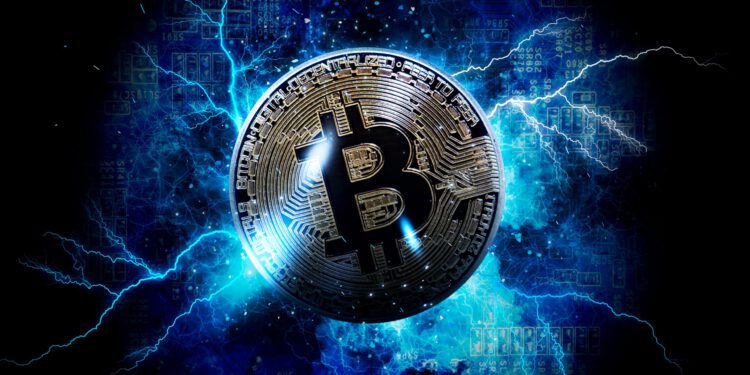Researchers Cosimo Sguanci and Anastasios Sidiropoulos published their research on potential attack possibilities of the Bitcoin Lightning network.
The research paper examines in more detail how malicious actors might be able to exploit two vulnerabilities of the network in order to compromise or even manipulate it.
The two attacks are a so-called “zombie attack” and a “mass double spend attack”.
The Lightning network allows the relatively sluggish Bitcoin blockchain to process payments quickly and safely. It achieves higher transaction speeds by directly connecting users on the network through payment channels.
The first and last transactions are transferred to the Bitcoin blockchain. All other transactions in between are processed by the Lightning Network away from the Bitcoin blockchain. Among other things, the number of nodes is important for the health of the Lightning network.
How do the attacks work?
During the ”zombie attack”, certain nodes are decommissioned, which makes coins that are in the payment channel at the time inaccessible. In the researchers’ paper, there is talk of a form of vandalism here.
The damage that could be caused is limited. For users sending legitimate payments, such an attack would only be frustrating, but not fatal, due to the increase in transaction fees.
A ”mass double-spend attack”, on the other hand, should be familiar to some readers. For example, if a malicious actor is able to control 51 percent of the computing power on a Proof of work blockchain, it can manipulate transactions and send (spend) funds multiple times.
However, what would be extremely costly to perform on the Bitcoin blockchain could be easier on the Lightning network, according to the study. In principle, it is possible to bombard the Bitcoin blockchain with fraudulent transactions.
We remember: only the first and last transactions on the Lightning network are transmitted. A gathering of larger nodes could transmit an unlimited flood of fraudulent transactions to the blockchain.
If these nodes then pay more fees for validation than legitimate transactions, they would be able to skip the queue and submit incorrect transactions. The consequences would be fatal.
The double-spending problem
On request, Bitcoin Lightning developer Rene Pickhardt explains that he had already dealt with this type of double-spending attack a few years ago. In an e-mail to other developers, he drew attention to this.
Such an attack could be even more serious on the Lightning network than on the main chain. With the latter, in itself, it is only possible to use one’s own funds twice. However, in the Lightning network, attackers could steal a seemingly arbitrary amount of funds, provided that enough payment channels are open, Pickhardt said.
Are attacks defensible?
Of course, the Lightning network is not equipped without security mechanisms. Such protection is provided by so-called watchtowers (watchtowers). These log the status of the network and, with the support of honest nodes, are able to detect dishonest transactions. These watchtowers would sometimes have to fail for such a mass double-spending attack to be successful.
The researchers at the University of Illionois were able to model such an attack using past congestion data on the Bitcoin blockchain. They came to the conclusion that such an attack would have led to disastrous results during a transaction jam.
In his original assessment, Pickhardt stated that he saw no way to prevent such an attack. The researchers also summarize in their work that the weak points remain unresolved to this day. They recommend optimizing the existing security structures and strictly guarding overloads on the main chain.
Another paper investigating a more accurate modeling of the attacks, taking into account transaction fees, is planned.








